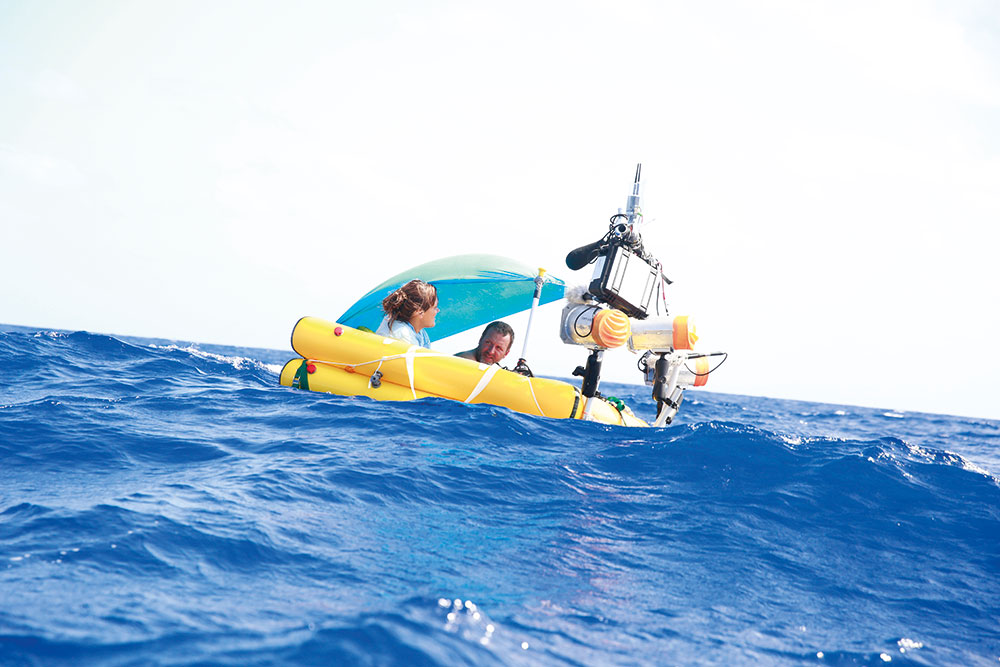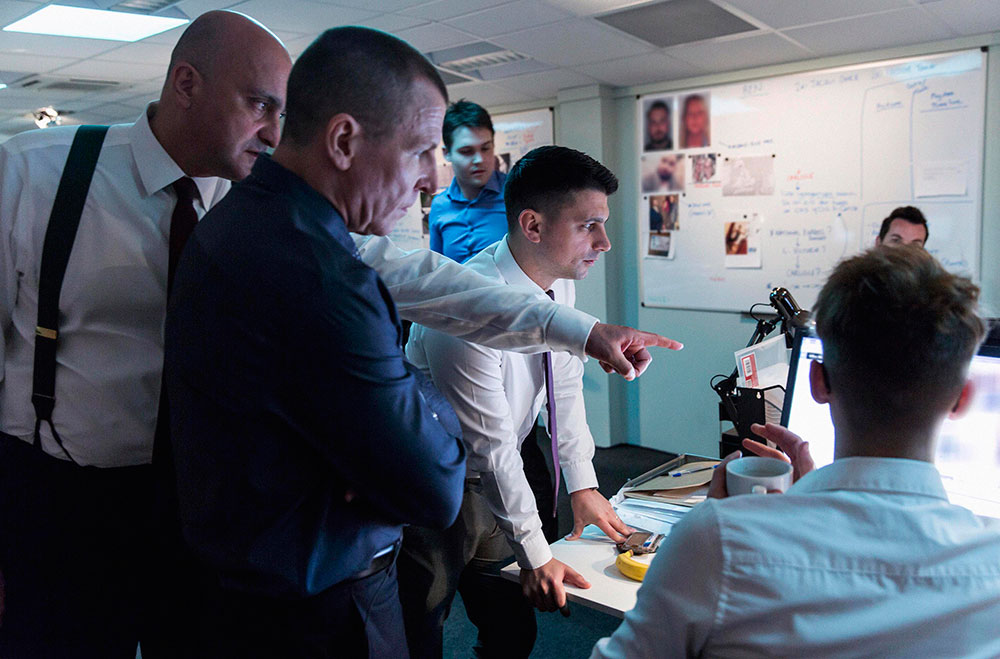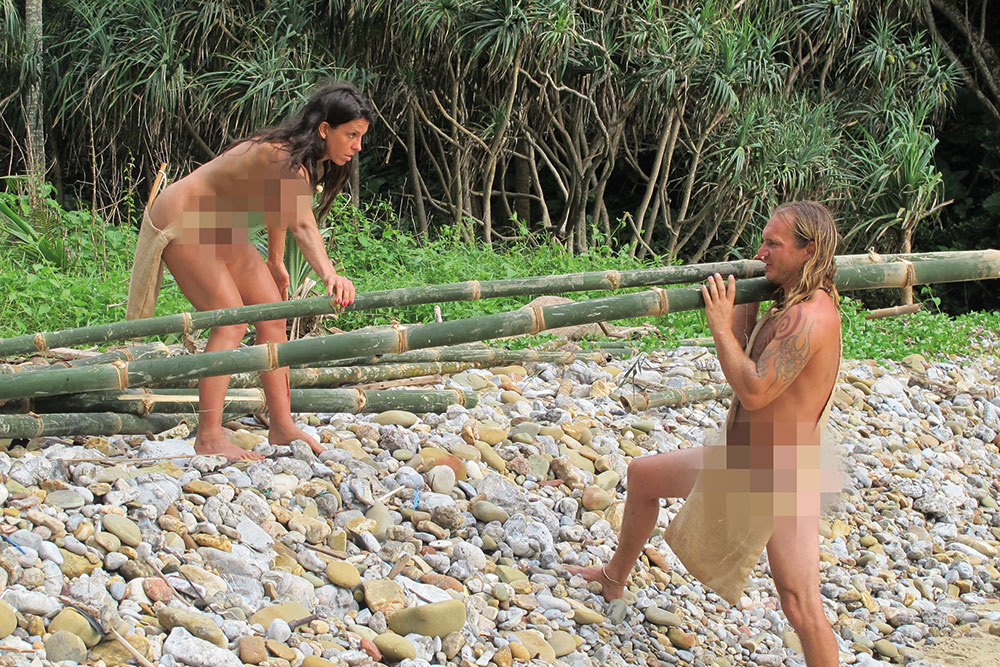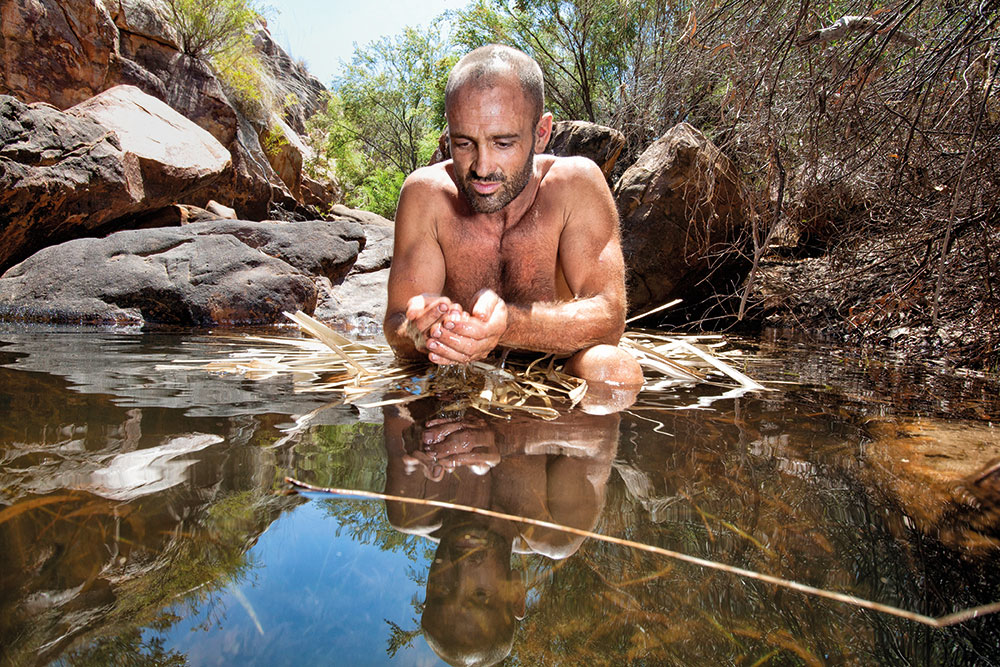
After more than 35 years of operation, TBI is closing its doors and our website will no longer be updated daily. Thank you for all of your support.
Authentically survival

 Survival shows are nothing new, but the last few years have seen the genre go into overdrive, with titles like Naked And Afraid, Alone, Running Wild, Hunted and The Island proving real-life endurance tests are popular around the world, reports Andy Fry.
Survival shows are nothing new, but the last few years have seen the genre go into overdrive, with titles like Naked And Afraid, Alone, Running Wild, Hunted and The Island proving real-life endurance tests are popular around the world, reports Andy Fry.
Ask TV executives why survival shows are proliferating and they will tell you it is to do with the audience’s curiosity about how they would get on in similar circumstances. “We have two popular formats in this genre – The Island and Hunted,” says Endemol Shine Creative Networks managing director Lisa Perrin.
“Both originated in the UK on Channel 4 and have been gaining traction, with The Island now sold to six countries and Hunted set to premiere in the US. Both began as discussions our creatives were having in the pub. They asked universal questions that we have all wondered at one point or another. Could you live on a deserted island without any of the luxuries of everyday life [The Island]? Could you disappear in today’s world [Hunted]? What about if a team of professionals were on your tail? If these ideas resonate with viewers, then the authenticity of the experiences on screen has captured the audiences’ imagination.”
The word “authentic” is one that comes up repeatedly when talking about the new wave of survival shows. “Survivor is still a juggernaut of a format,” says Perrin, “but there’s been a huge push to give viewers authentic experiences as well. People genuinely want to experience life on the run, or on a deserted island, and we’ve been able to deliver that with an innovative shooting style that involves embedding crews. We really believe this gives viewers the experience of fighting for survival on an island, or in the case of Hunted (below), life on the run.”
Others who use the ‘A’ word include Joel Denton, managing director, international content sales and partnerships at A+E Networks, who says History Channel’s Alone has developed into a huge franchise. “In this show, ten people are dropped into the wilderness of Vancouver Island without any back up and in separate locations. Carrying only what they can fit in a backpack and a camera to film themselves, the aim is to survive as long as possible with the promise of a financial reward for the one who is last to leave the process. Season one was such a hit that we’re now in production on series two and are talking to broadcasters around the world about formats deals.”
While the physical ordeal is part of Alone’s appeal, Denton believes that “the real beauty of it is the psychology of being isolated. “Our participants are trained survivalists, but after a while you start to see them unravel under the weight of isolation,” he says.
“That’s different to a lot of other survival shows that are about the way groups interact with each other throughout.”
Alone was History’s number one non-fiction series of 2015 and has been rolled out across the channel internationally. As to its potential as a format, he says: “It’s a complex production, which requires a lot of pre-planning and also a lot of editing expertise once the footage from the participants comes in, but we have secured options in some major territories. Our aim is for the format and original to have the same home.”
Electus International’s nearest equivalent to Alone is The Raft (top), which airs on National Geographic Channel in the US and in which two people have to survive for seven days on the open sea in a raft.
“It’s relatable adventure,” says Electus International president John Pollak. “Audiences [and buyers] are drawn to the fact that this is real people in the middle of the ocean with handheld cameras. It gets you asking – could I do that?”
Electus has three survival shows on its books, each of which is designed to trigger a different audience response. “What we’re seeing is that the process of survival can be used to tell different kinds of stories,” Pollak says. “We have another show called Running Wild with Bear Grylls, in which Bear and a small crew head off into the wilderness for 48 hours with a celebrity like Zac Efron, Kate Winslet or Barack Obama. You have all the survival elements people enjoy, but you also get the kind of deep insight into these stars you wouldn’t get on a chat show.”
The third show on Electus’ slate is Mission Survive, another show involving Bear Grylls as the resident survival guru. Once again, there are celebrities, but in this case there is also an elimination process each episode. “This is the type of show that could work with or without celebrities,” says Pollak, “I think the message is that there is room for both celebrity-based and non-celebrity-based survival shows in the international market.”
Of course, one of the biggest celebrities in the survival genre is Bear Grylls – who, aside from Running Wild and Mission Survive, was also involved in the UK version of The Hunted. While Grylls’ popularity has been helping with the tape sales of the above shows, what’s the situation when buyers want to set up the format with local talent?
“That’s achievable,” says Pollak. “Bear is a unique talent, but we have territories, including France, making their own version of Running Wild. Because of the success of shows like Survivor, there are people all over the world who have become well-known and can front local versions of shows.”
 Because this is TV, a lot of survival shows have some kind of game element, whether it is the lure of cash prizes, time limits or eliminations. But some producers are keeping much more to a purist documentary tradition. “We’ve just made Mygrations (above) for National Geographic,” says Matt Robins, creative director at indie October Films. “In this show, we follow a group of 20 elite men and women as they attempt to complete the wildebeest migration through the Serengeti to the Mara River in Africa.”
Because this is TV, a lot of survival shows have some kind of game element, whether it is the lure of cash prizes, time limits or eliminations. But some producers are keeping much more to a purist documentary tradition. “We’ve just made Mygrations (above) for National Geographic,” says Matt Robins, creative director at indie October Films. “In this show, we follow a group of 20 elite men and women as they attempt to complete the wildebeest migration through the Serengeti to the Mara River in Africa.”
Robins says the 6x60mins series, which covers a 200-mile, six-week journey, is “very raw, very documentary. We thought hard about what lessons we could take out of this gruelling expedition. One of the most interesting aspects was the way they had to come together as a pack to survive the journey”.
Meaningful take-outs are also part of the essence of another October production, Trailblazers, for Discovery Channel in the US. “This one is about elite survivalists leading teams of scientists to dangerous edges of the world in search of answers to mysteries,” says Robins. “This has all of the peril and hardships you’d associate with this genre, but with a valuable scientific result.”
Ronan Hand, head of factual and entertainment acquisitions for ITV Studios Global Entertainment, agrees with Pollak and Robins that this survival-plus approach is what is making the programming category so vibrant. “The genre is in a really interesting place at the moment, as producers and networks are seeing that survival shows can shine a spotlight on wider issues, bring out the best in contributors and show another side to established talent,” he says.
As a global production business, ITV Studios has more than one iteration of this genre in production. “We have Survival School, which uses Bear Grylls’ position as the UK’s chief Scout and takes his expertise and introduces the survival/personal challenge format to a younger audience,” says Hand. “The Garden [an ITV prodco] recently produced a second season of 10,000 BC for Channel 5 in the UK, which is a ‘social-experiment’ spin on survival. And not forgetting I’m a Celebrity, the first and last word in the entertainment gameshow spin on this genre, which is set for its 16th season later this year in the UK and has been produced in a further ten territories worldwide.”
Of the three, Survival School is the newest to come to market, and it has the same kind of zeitgeisty feel as Perrin’s shows. “It challenges a group of children to give up their much-loved technology to see if they can learn the skills needed in survival situations and hopefully gain an appreciation of the outdoors,” says Hand. “The format shows children how exciting testing yourself can be, and how working together and being part of a team can be such an important part of personal growth.”
Hand believes the show has solid format potential “given that it delivers incredible locations that showcase a nation’s natural beauty [the UK series was shot in Wales], and it has a central physical conceit that is attractive to potential contestants. However, some territories may wish to buy the finished show to see if it works for their audience. And Bear Grylls’ involvement gives the show immediate authenticity”.
It’s easy to pigeon-hole survival shows as men-only programming, but the message from the market is that there are interesting gender dynamics to these shows. With Mygrations, October Films’ Robins says: “We gained some really interesting insights into how men and women cope under pressure.”
 Other shows where gender is playing a key role include Discovery’s Naked and Afraid (above) franchise (see box) and The Island, which ran male and female colonies for season two in the original commissioning territory.
Other shows where gender is playing a key role include Discovery’s Naked and Afraid (above) franchise (see box) and The Island, which ran male and female colonies for season two in the original commissioning territory.
Other variants on the survival theme include a new Fox show called Kicking and Screaming, in which ten expert survivalists are hooked up with pampered partners and have to overcome dangerous animals, raging rivers, hunger and extreme weather, similar to the dynamic in shows like Beauty and the Geek.
In a comic variant on the genre, BBC Three’s Stupid Man, Smart Phone sees comedian Russell Kane attempting to survive in harsh terrains such as the Arctic Circle and arid African plains with just a smartphone for help. Another interesting take is DRG’s Beyond Human Boundaries, where Arman Alizad tries to survive in some of the poorest places on Earth, such as a landfill site in Cambodia and a gang-controlled favela of Brazil.
Of course, all this talk of authenticity does raise a key question: how do you keep people safe? The TV business has had its tragedies, including deaths during the production of Survivor and Dropped. Isn’t there a possibility that more participants will suffer as shows push ever harder to excite the armchair audience? Bears, lions, dehydration, hunger, fever, mental breakdown, parasites, accidents and even stumbling into bandit country are just some of the downsides of such shows.
A&E’s Denton says it would be disingenuous to insist that shows like Alone that go off the grid are 100% risk-free. “But safety is clearly paramount,” he says. “Alone’s participants have satellite phones and GPS trackers, and there are rescue teams nearby. Doctors visit them each week and make judgements about whether they are physically and mentally fit to continue.”
Robins, whose show promises “harsh elements and deadly predators”, calls it “an educated risk. If you understand what you’re doing, you can push the boundaries and connect with nature while also providing protection. National Geographic were a brilliant partner on Mygrations because they understand the logistics, how to respond to any emergency.”
Audiences don’t seem put off by what they’ve seen on screen, and are more anxious than ever to get involved. Denton talks of increased applications for Alone, while The Island saw applications rise from 80,000 for season two to 135,000 for season three. At this rate, there won’t be anyone left at home to watch survival shows on TV.
Discovery’s survival tactics
Discovery Networks can claim to be the leader in the survival programming space. Aside from its work with Bear Grylls and the huge success of its Naked and Afraid franchise, it boasts titles including Marooned with Ed Stafford (below), Dual Survival and Free Ride. “It is a competitive genre,” says Helen Hawken, VP, production and development, factual, at Discovery Networks International. “That is good, because it means we keep having to come up with fresh ideas and great new characters.”
Hawken is a big fan of Ed Stafford, whose modus operandi is to go to remote places and see if he can survive without any outside support. “He’s the real deal, which is important if you want the audience to believe this is an authentic experience,” she says. “He self-shoots footage, so that there is no suggestion of a crew supporting him. And he’s very honest about what’s happening to him – even if things are going badly. I think that’s part of why men and women relate to him.”
It’s a similar situation with green enthusiast Rob Greenfield, who is fronting new show Free Ride, about to air around the world on Discovery’s channels. In this case, the goal is to travel across South America with no money, relying on the goodwill of locals and his personal skillset to survive. “We’d been pitched this idea before, but what was appealing for us about this iteration is that Rob lives off the grid anyway,” says Hawken. “It is about testing his own philosophy. Travelling with him is filmmaker James Levelle, who is more sceptical about Rob’s worldview, so it makes an interesting dynamic.”
Most of Discovery’s finished tape survival shows have global appeal, says Hawken. “But there is scope to do local versions where it makes sense. We did that with a US show called Dual Survival that was remade in Brazil for the Latin American market.”
Echoing market trends, Discovery has also explored survival hybrids such as Kings of the Wild, in which a survivalist and a chef travel together – seeking to prove that you can eat like a king wherever you are. “I think there is an enduring appetite for survival shows, because the genre speaks to who we are as a species,” says Hawken, “but we need to keep innovating to keep the talent interested and the audience satisfied.”


